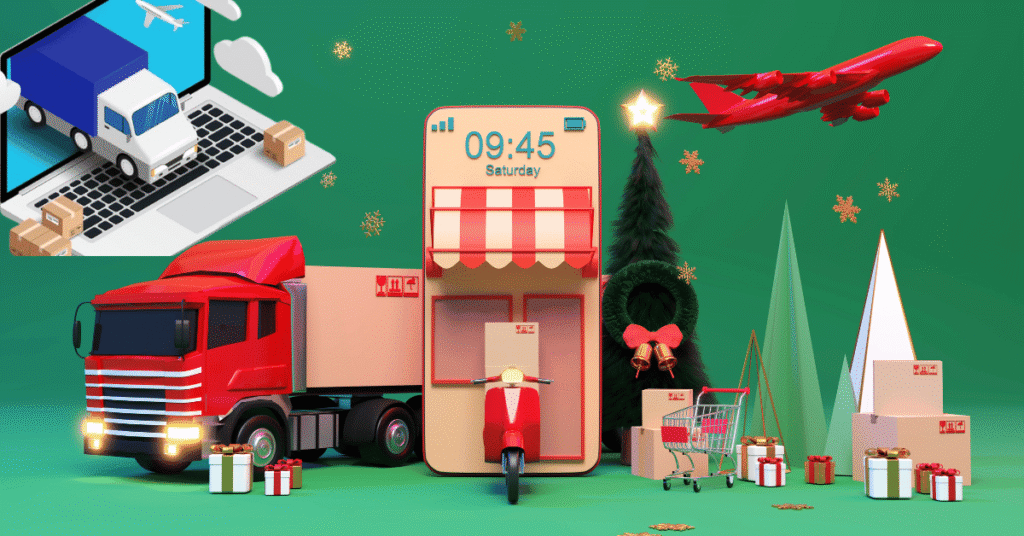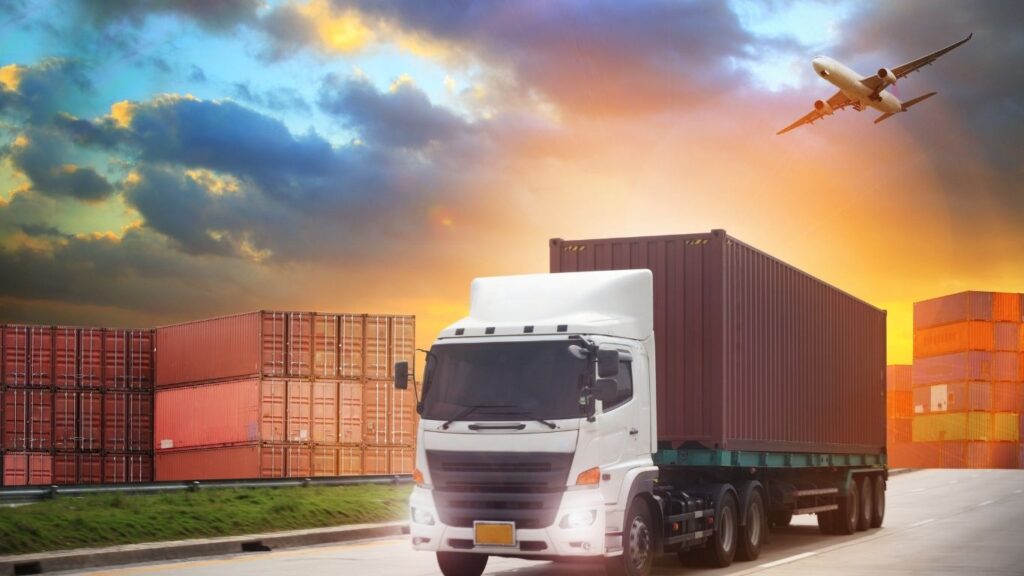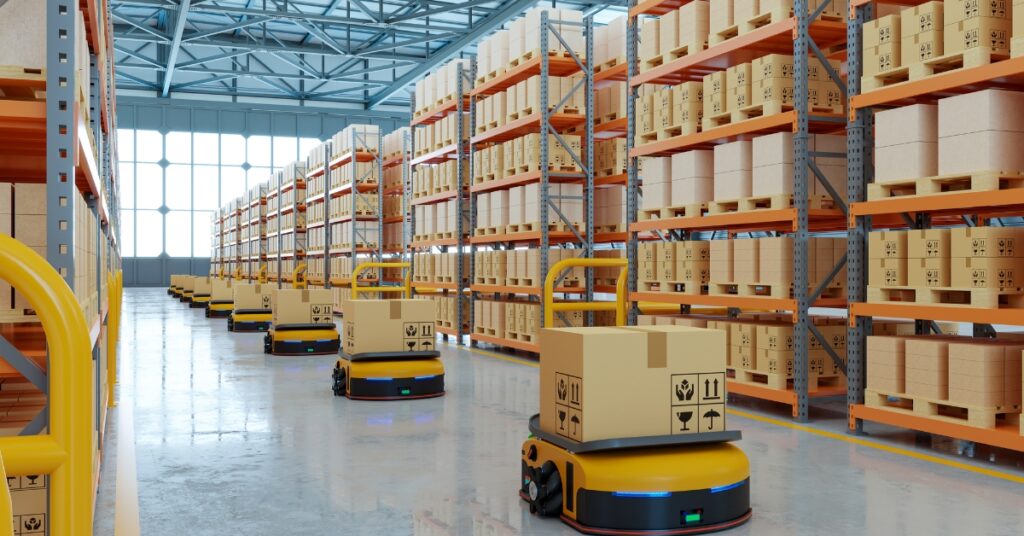1. Introduction to E-Commerce Logistics
E-commerce logistics involves storing, managing, and shipping products sold online until they are delivered to consumers. Considering that global e-commerce sales will surpass $7 trillion by 2025, the logistics system supporting them would now matter perhaps more than ever.
From managing inventory to the last stage of the entire supply chain should be seamlessly connected. E-commerce logistics is not just about moving packages; it has revolutionized the delivery of a positive customer experience.
2. Why E-Commerce Logistics Matters
Consumers today love fast, reliable, and transparent delivery service promises. Amazon has set new standards through same-day or one-day shipping. With that, even little to medium-sized businesses would need to level up because their e-commerce logistics could not be that different from the intense competition.
Some of the reasons that make e-commerce logistics important are as follows:
Builds Trust in Customers
- Reduce Cart Abandonment
- Increase Repeat Purchases
- Enhanced Operational Effectiveness
- Impact on Brand Reputation
Coerced Logistics could develop situations that resulted in late deliveries, damaged products, and, ultimately, lost customers.
3. Major Elements of E-Commerce Logistics
The parts of core components for breaking down e-commerce logistics include:
- Management of Inventory
- Processing Orders
- Warehousing
- Shipping and Delivery
- Handling Returns
- Integration of Technology
All of these factors are very critical when it comes to ensuring that a client receives her or his product in time and in perfect condition.
4. Inbound vs. Outbound Logistics
Regarding e-commerce logistics, both inbound and outbound logistics should be efficient.
Inbound Logistics
Receive goods from the manufacturers or the suppliers at your warehouse. This includes:
- Freight Coordination
- Supplier Relationships
- Tracking shipments
- Quality Control
Outbound Logistics
Covers from your warehouse to the customer:
- Order-pick and pack
- Courier selection
- Speed of delivery
- Customer notifications
A delay or failure in either direction can affect the overall customer experience.
5. Inventory Management in E-Commerce
Inventory management, or what is the backbone of e-commerce logistics, always means that more inventory can be an excuse for tying up capital and space in the warehouse, while less inventory will take away sales and create unhappy clients.
Best Practices:
- Automate stock-tracking software
- Demand forecasting using data analytics
- Implement an ABC inventory classification
- Practice a just-in-time (JIT) inventory, when possible
- Utilize barcode and RFID for accuracy–
- Good inventory systems let you lower overhead and increase fulfillment speed.
6. Warehouse Strategies
Dynamic warehousing strategies mainly improve the e-commerce companies’ logistics performance.
Types of Warehousing Models:
- Centralized Warehousing: One or two large distribution centers
- Your warehousing decision is based on the scale, region, and delivery promise.
Smart Warehousing Feature:
- Automate pick and pack
- Include Robotics and AI
- Real-time Inventory synchronization
- Temperature and climate control in the care of sensitive goods
7. Order Fulfillment Process
This is a multi-step process, beginning when a customer places an order and ending with order delivery.
Fulfillment Steps:
- Receive the order and confirm it.
- Picking items up from the inventory
- Pack the order
- Creating shipping labels
- Deliver using a courier
Last-Mile Delivery: Challenges and Solutions
This last mile of a shipment would be defined as that from the warehouse to the customer’s doorstep. This part of e-commerce logistics is often the most expensive and most complicated in terms of management.
Challenges:
- Traffic congestion
- Delivery address inaccuracies
- High cost per delivery
- Delivery attempts failed
Solutions:
- Use local delivery partners
- Offer a delivery slot choice
- GPS route optimization
9. Returns Management
Returns are a way of life in e-commerce. A solid logistics system must encompass a strong, dependable reverse logistics strategy.
Reasons for Returns:
- Wrong item delivered
- Item defective or damaged
- Item returned at buyer’s request
- Size or fit issues
Best practices:
- Prepay return labels
- Clear returns policy
- Insurance length for processes enhanced by returns data
- Where possible, resell returned products
- Automate return tracking for transparency
An efficient returns system is not only a better logistics constitutes better customer service.
10. E-Commerce Logistics Software Solutions
Modern e-commerce logistics runs on technology, and logistics software can automate, integrate, and streamline operations from end to end.
Key Software Tools:
- Warehouse Management Systems (WMS)
- Inventory Management Software
- Shipping and Courier Aggregators
- Order Management Systems (OMS)
- Delivery Route Optimization Tools
Choose the tools that afford integration with platforms like Shopify, WooCommerce, Magento, and with some online marketplaces such as Amazon or eBay.
11. Selecting the Right Logistics Partner
Avail of third-party logistics (3PL) in scaling your operations at a faster pace, while focusing your energies on selling and marketing.
What to Consider:
- Speed and reliability in the shipping process
- Geography is reached by the service
- Compatibility with your store
- Provisions of tracking and reporting tools
- Clear-cut pricing
- Scalability options
A great logistics partner should enrich your service and not complicate it.
12. E-Commerce Logistics Trends in 2025
Automated, data-driven, and customer-centric is the future of e-commerce logistics. Following this are the trends:
- Deliveries within the same day and 2 hours.
- Built demand forecasting with AI and machine learning.
- Green delivery alternatives.
- Flexible delivery points (lockers, stores, etc.).
- Transparency in the supply chain by blockchain.
13. Sustainability in E-Commerce Logistics
Eco-savvy consumers have driven brands into the green; hence. E-commerce sustainable logistics practices have become selling points.
Ways on How to Make Logistics Greener:
- Optimize delivery routes for emission reduction
- Use electric delivery vehicles
- Minimize packaging waste
- Source from local suppliers
- Provide carbon offsets to customers
- Cost-cutting, coupled with attracting eco-aware shoppers, will be made possible by sustainability.
14. Global vs. Local Logistics Approaches
Your company could either ship locally or internationally, depending on the business model.
Local Logistics Benefits:
- Lower costs related to shipping
- Faster delivery
- Easier returns
- Global Logistics Benefits:
- Broader markets
- Diverse customers
- Larger revenue potential
Tips for Global Logistics:
- Know international customs laws.
- Work with several global courier partners.
- Localize fulfillment centers.
- Offer multi-language tracking.
E-commerce logistics should be optimized, whether local or global, for transparency, speed, and accuracy.
Conclusion
E-commerce logistics comprises much more than just shifting boxes- it is a complex and strategic function that defines customer satisfaction and scalability of businesses.
For success in 2025, businesses need to:
- Offer flexible and speedy delivery options
- Focus on inventory accuracy
- Optimize returns and reverse logistics
Not only will cost optimization and efficiency fine-tuning of your e-commerce logistics, but they will also win your consumers’ trust for the long haul.



